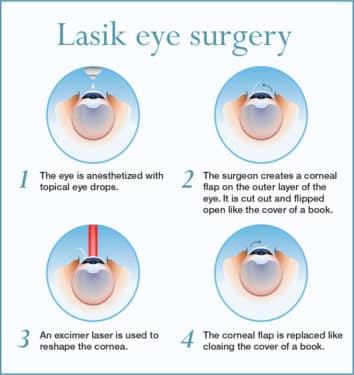Refractive Lens Exchange Explained: What Your Ophthalmologist Isn't Informing You
Refractive Lens Exchange Explained: What Your Ophthalmologist Isn't Informing You
Blog Article
Content Author-Carpenter Andreassen
Have you ever thought about Refractive Lens Exchange (RLE) as an option for vision modification? While it isn't as widely discussed as LASIK, RLE could be a game-changer for your eyesight. Lots of people forget its advantages, assuming conventional techniques are their only option. However what are the genuine benefits, and what might your optometrist not be telling you regarding this procedure? Let's check out the ins and outs of RLE together.
Comprehending Refractive Lens Exchange: The Basics
Refractive lens exchange (RLE) is a surgery that can dramatically boost your vision, particularly if you're taking care of presbyopia or severe refractive mistakes.
Throughout RLE, your eye cosmetic surgeon removes your eye's all-natural lens and replaces it with an artificial one tailored to your vision requires. This treatment can correct nearsightedness, farsightedness, and astigmatism, giving you more clear vision without counting on glasses or get in touch with lenses.
The surgery is generally fast, taking less than an hour, and many clients experience minimal pain. https://www.hellomagazine.com/healthandbeauty/health-and-fitness/2019080676161/laser-eye-surgery-review-london/ is fairly quickly, permitting you to go back to your everyday activities shortly after.
If you're thinking about RLE, consulting with your ophthalmologist can aid you establish if it's the ideal choice for you.
Trick Differences Between RLE and Typical Cataract Surgery
While both refractive lens exchange (RLE) and standard cataract surgery include changing the eye's natural lens, their key objectives and patient profiles differ substantially.
RLE is targeted at people looking for to reduce their dependancy on glasses or get in touch with lenses because of refractive errors, commonly prior to cataracts establish. On the other hand, typical cataract surgical treatment commonly targets individuals who have actually established cataracts, which shadow the lens and impair vision.
The lenses used in RLE can give a more comprehensive range of vision correction, while common cataract surgery normally involves basic monofocal lenses.
Furthermore, RLE prospects are usually younger and in great overall health and wellness, whereas cataract individuals may be older and have other wellness worries.
Choosing a fantastic read relies on your specific vision requirements and scenarios.
Potential Advantages and Factors To Consider of RLE
If you're taking into consideration refractive lens exchange (RLE), you'll locate several possible advantages that may boost your lifestyle.
RLE can supply you with clearer vision, minimizing or removing the demand for glasses or call lenses. It provides an opportunity to resolve presbyopia and various other refractive mistakes all at once, frequently enhancing your total visual acuity.
Additionally, RLE can be an excellent alternative if you're not a suitable prospect for LASIK. However, it's important to consider the factors to consider, like the price, prospective risks, and the recovery period.
Reviewing your particular requirements with your eye doctor can assist you make a notified choice, ensuring you choose the very best course for your vision adjustment.
Verdict
In conclusion, refractive lens exchange supplies an unique service for vision modification that surpasses what LASIK can offer. It's necessary to evaluate the benefits against prospective threats and expenses prior to making a decision. Don't think twice to ask your eye doctor the hard concerns to guarantee you totally understand the treatment and its implications for your vision. With the right details, you can with confidence select the very best alternative for your eyes and way of living.
